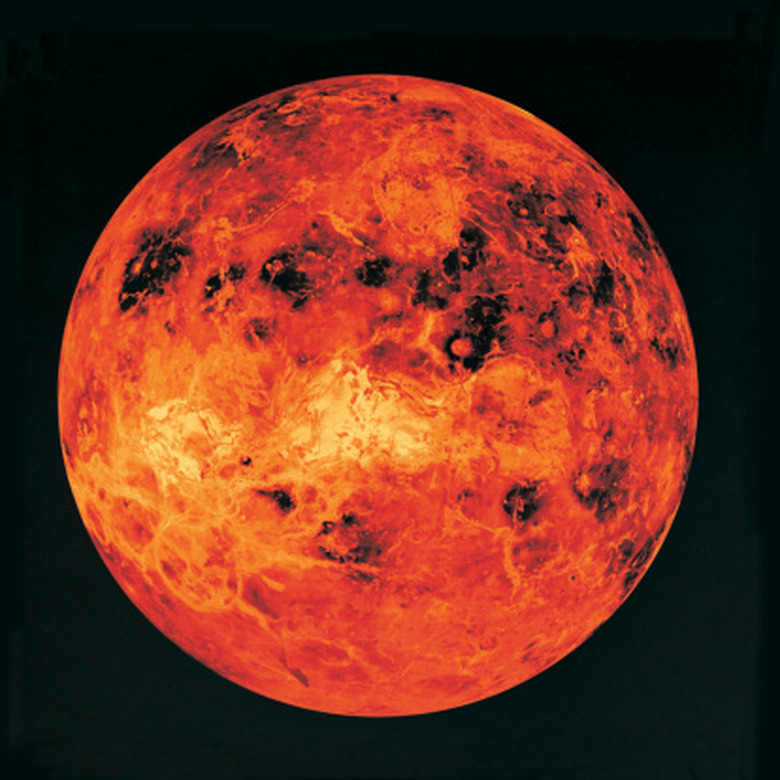Venus Solar System Science Projects
Named after the Roman goddess of love, Venus is the second planet from the sun in our solar system. According to NASA, Venus has a thick, toxic atmosphere that traps heat in a greenhouse effect. Use these projects to introduce your students to the planet Venus and keep them actively involved in learning.
Model Solar System
Model Solar System
Your students can build a model of Venus or a model of the solar system. Use foam balls and have the students paint them to look like the planets. Attach the planets to string and a hanger to suspend the models around the classroom. Discuss the position of Venus in the solar system and the similarities to Earth, such as its size and gravity. Discuss how Venus rotates backward, or in retrograde, and the makeup and landscape of the planet.
Model Volcano
Model Volcano
According to NASA, Venus is home to over 1,600 huge volcanoes, with an estimated 100,000 to over 1,000,000 covering its surface. Have the children build a volcano model out of paper mache. Show them pictures of Venus and its volcanoes and discuss the gas-based eruptions, high pressure on Venus and the fluid lava flows versus eruptions. Add baking soda and vinegar to demonstrate a volcanic eruption. Discuss the differences between volcanoes on Earth and Venus, such as the lack of water on Venus and how the volcanic explosions are more gaseous-based than those on Earth.
The Greenhouse Effect on Plants
The Greenhouse Effect on Plants
This experiment will help the students understand the atmosphere of Venus and its cloud cover. Have each child plant seeds in two glass jars. Put a lid on one jar and leave the other jar uncovered. Place the jars in the sun and observe the growth over a period of days to determine which seeds sprout sooner. Because plants are unable to grow on Venus because it is too hot, the student can observe the nature of greenhouse gases. Discuss with the students the cloud cover of Venus and the way the clouds trap in heat, such as in a car on a hot day or in a jar.
Creative Story
Creative Story
Venus is often visible in the night sky without a telescope. Tell the children to observe Venus at night, preferably with a telescope. Have the children note the position of the planet in the sky and map the view of the night sky around Venus with the naked eye and a telescope. Have the children map the sky by drawing what they see. An older child can then compare her version with a star chart and discover what other astral bodies she saw. Add creativity to the project by asking the child to write a short story about what life would be like on Venus. Have the child use facts about Venus in the story while using her creativity to describe an alien race that lives there.
References
Cite This Article
MLA
Daniel, Jessica. "Venus Solar System Science Projects" sciencing.com, https://www.sciencing.com/venus-solar-system-science-projects-8105345/. 24 April 2017.
APA
Daniel, Jessica. (2017, April 24). Venus Solar System Science Projects. sciencing.com. Retrieved from https://www.sciencing.com/venus-solar-system-science-projects-8105345/
Chicago
Daniel, Jessica. Venus Solar System Science Projects last modified August 30, 2022. https://www.sciencing.com/venus-solar-system-science-projects-8105345/
